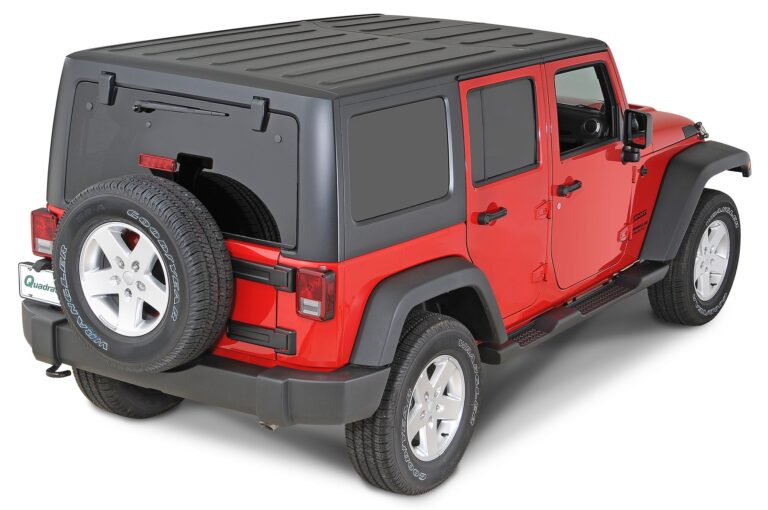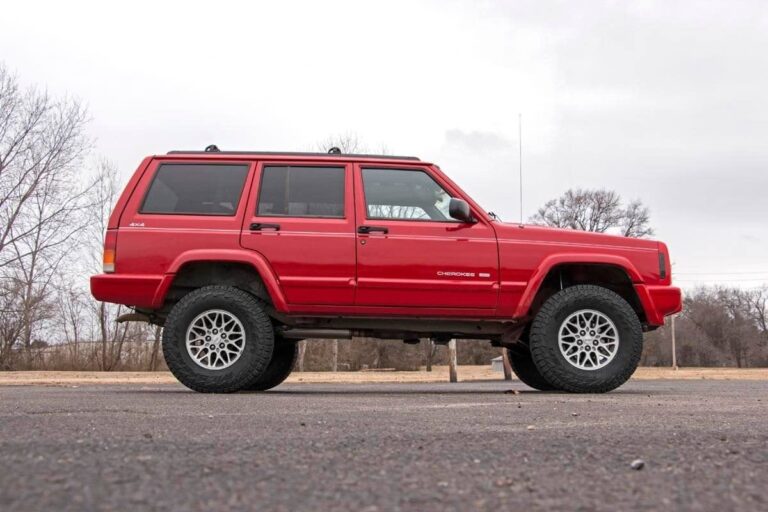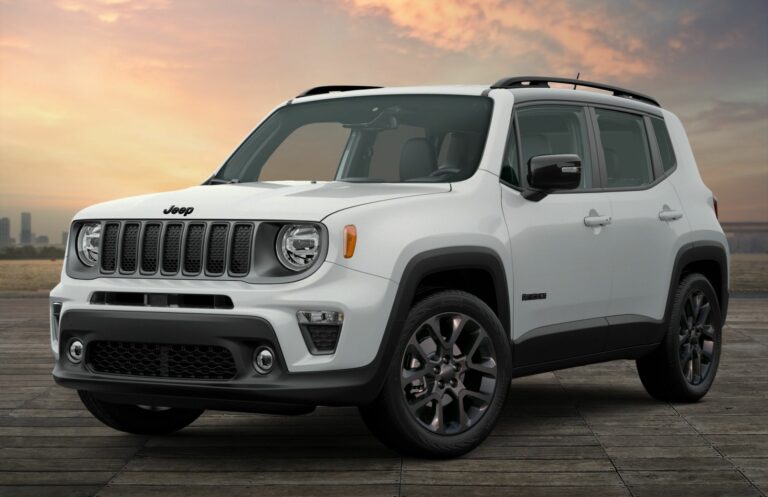1999 Jeep TJ For Sale: Your Ultimate Guide to Finding and Owning an Icon
1999 Jeep TJ For Sale: Your Ultimate Guide to Finding and Owning an Icon jeeps.truckstrend.com
The year 1999 marked a sweet spot for many things: the dawn of a new millennium, the peak of pop culture, and for off-road enthusiasts, a golden era for the Jeep Wrangler TJ. The 1999 Jeep TJ, a quintessential embodiment of rugged American spirit and go-anywhere capability, continues to command a passionate following in the used vehicle market. More than just a mode of transport, owning a TJ is an embrace of adventure, a testament to simplicity, and an entry into a vibrant community. This comprehensive guide will navigate the ins and outs of finding, evaluating, and ultimately acquiring a 1999 Jeep TJ for sale, ensuring you make an informed decision on this iconic vehicle.
Why the 1999 Jeep TJ Stands Out: The Enduring Appeal
1999 Jeep TJ For Sale: Your Ultimate Guide to Finding and Owning an Icon
The Jeep TJ generation, produced from 1997 to 2006, revolutionized the Wrangler lineup by replacing the leaf spring suspension of its YJ predecessor with a more comfortable and capable coil spring setup. This innovation significantly improved both on-road ride quality and off-road articulation, without sacrificing the solid axle durability that defines the Wrangler. The 1999 model year, in particular, benefits from being a mid-generation vehicle, having ironed out some of the initial kinks while still retaining the beloved simplicity before the introduction of more complex electronics in later models.
Key features that make the 1999 TJ a standout include:
- Legendary 4.0L Inline-Six Engine: This robust and dependable engine, known for its torque and longevity, is a workhorse that can endure hundreds of thousands of miles with proper maintenance. It’s the engine of choice for most enthusiasts due to its perfect blend of power and reliability.
- Coil Spring Suspension: Offering superior ride comfort and exceptional articulation for tackling challenging terrains, this was a game-changer for the Wrangler.
- Solid Axles: Retaining the Dana 30 front and often a Dana 35 or optional Dana 44 rear axle, the TJ boasts incredible durability and is highly sought after for off-road modifications.
- Classic Aesthetics: With its iconic round headlights, seven-slot grille, and removable doors and top, the 1999 TJ embodies the timeless Jeep design that resonates with purists and casual admirers alike.
- Extensive Aftermarket Support: The TJ boasts one of the largest aftermarket parts communities, meaning virtually any modification, repair, or upgrade is readily available.

These attributes combine to create a vehicle that is not just a capable off-roader but also a highly customizable platform, a reliable daily driver, and a potential collector’s item, all wrapped up in a package that holds its value remarkably well.
What to Look For When Buying a 1999 Jeep TJ: A Comprehensive Buyer’s Guide
Purchasing a used 1999 Jeep TJ requires a keen eye and a thorough inspection. Given their age and the adventurous life many have led, potential issues are common. Here’s what to prioritize during your evaluation:
- Rust, Rust, Rust: This is the TJ’s Achilles’ heel, especially in areas where road salt is used.
- Frame: Critically inspect the frame rails, especially near the control arm mounts (front and rear), the skid plate area, and where the frame curves over the rear axle. Look for bubbling paint, flaking, or rot that indicates structural compromise. Tap with a hammer; a dull thud or a hole means trouble.
- Body: Check rocker panels, floorboards (under the carpet), front fender wells, door sills, and the cowl area under the windshield. Minor surface rust is manageable; extensive perforation is costly.
- Engine and Drivetrain:
- 4.0L I6: Listen for any unusual knocking, ticking (the "4.0L tick" can be harmless but investigate if loud), or misfires. Check for oil leaks around the valve cover, oil pan, and especially the rear main seal (a common leak, but not necessarily a deal-breaker if minor). Ensure the cooling system is healthy (no overheating, clear coolant).
- 2.5L I4: Less common, but also reliable. Check for similar issues as the 4.0L.
- Transmission:
- Manual (AX-15/NV3550): Test all gears, listen for grinding, check clutch engagement.
- Automatic (32RH/30RH): Check fluid level and color (should be reddish, not dark or burnt). Ensure smooth shifts without hesitation.
- Transfer Case (NP231): Check for leaks. Test 2WD, 4-High, and 4-Low engagement. Ensure the linkage isn’t sloppy.
- Axles (Dana 30/35/44): Look for fluid leaks from differential covers and axle seals. Check for excessive play in the U-joints.
- Suspension and Steering:
- "Death Wobble": This violent shaking of the front end at certain speeds is a common TJ issue, usually caused by worn steering components (tie rod ends, drag link, track bar), ball joints, or unbalanced tires. Inspect all these parts for looseness or wear.
- Control Arms & Bushings: Check for cracked or worn rubber bushings.
- Shocks: Look for leaks or signs of being blown.
- Electrical System: TJs have a relatively simple electrical system. Test all lights, gauges, power windows (if equipped), wipers, and the HVAC system.
- Modifications: Many TJs are modified. Evaluate the quality of the modifications. Poorly installed lift kits, oversized tires, or custom fabrication can lead to bigger problems down the road. Ask for receipts or documentation of professional installation.
- Interior & Top: Check for rips in seats, functionality of windows/doors, and the condition of the soft top (rips, fading, clarity of windows) or hard top (cracks, leaks).
- Documentation: Always ask for service records and a clean title. A pre-purchase inspection (PPI) by a trusted mechanic, especially one familiar with Jeeps, is highly recommended.


Understanding 1999 Jeep TJ Trim Levels and Options
While the Rubicon trim was introduced later (2003), the 1999 TJ offered several trim levels and options that influenced capability and comfort:
- SE: The base model, typically equipped with the 2.5L 4-cylinder engine, manual transmission, and basic features. More affordable but less powerful.
- Sport: The most common and popular trim, usually featuring the 4.0L inline-six engine, and offering more options like air conditioning, cruise control, and a wider range of colors.
- Sahara: The "premium" trim, identifiable by its body-color fender flares, special interior fabrics, and more standard features like A/C, fog lights, and sometimes the optional Dana 44 rear axle.
- Options to Look For:
- 4.0L Engine: Highly preferred for its power and reliability.
- Automatic vs. Manual: A matter of preference, but both transmissions are robust.
- Dana 44 Rear Axle: A stronger, more desirable rear axle, especially for off-roading or larger tires. It’s often indicated by a rubber fill plug on the differential cover instead of a metal one.
- Hard Top: Offers better security, insulation, and noise reduction compared to the standard soft top.
- Air Conditioning: A welcome comfort feature, especially in warmer climates.
The Value Proposition: Why a 1999 TJ is a Smart Buy
Despite being over two decades old, the 1999 Jeep TJ remains a remarkably smart investment for several reasons:
- Strong Resale Value: TJs, particularly those in good condition with the 4.0L engine, hold their value exceptionally well, often depreciating far less than newer vehicles.
- Lower Initial Purchase Price: Compared to a new or even a late-model used Wrangler, the TJ is significantly more affordable, making Jeep ownership accessible.
- Simplicity and Maintainability: Fewer complex electronics mean easier diagnostics and repairs. Many common issues can be tackled by a DIY enthusiast, saving on labor costs.
- Abundant and Affordable Parts: The sheer volume of TJs produced and the dedicated aftermarket industry ensure that parts are readily available and often less expensive than for newer vehicles.
- Timeless Design and Community: The TJ’s classic look never goes out of style, and joining the TJ owner community means access to a wealth of knowledge, trail partners, and camaraderie.
Selling Your 1999 Jeep TJ: A Seller’s Guide
If you’re looking to sell your 1999 Jeep TJ, maximize its value with these tips:
- Preparation is Key:
- Clean Thoroughly: Detail the interior and exterior. A clean vehicle makes a strong first impression.
- Address Minor Issues: Fix small things like burnt-out bulbs, worn wiper blades, or minor fluid leaks. These show attentiveness and can prevent buyers from nitpicking.
- Gather Documentation: Have service records, modification receipts, and a clean title ready.
- Photography: Take high-quality photos in good lighting. Include shots of the exterior from all angles, the interior, engine bay, and undercarriage (especially frame areas). Highlight any desirable features or modifications.
- Honest and Detailed Description: Be transparent about the vehicle’s condition, including any rust or known mechanical issues. List all features, modifications, and recent maintenance. Detail the trim level, engine, transmission, and mileage.
- Pricing: Research comparable 1999 TJs for sale in your area on various platforms. Consider your Jeep’s condition, mileage, trim, and modifications. Be realistic but confident.
- Where to Sell: Online marketplaces like Craigslist, Facebook Marketplace, AutoTrader, and dedicated Jeep forums are excellent platforms. Local classifieds can also work.
- Be Prepared for Questions: Buyers will have many questions. Be patient and knowledgeable about your vehicle.
Common Challenges and Solutions for 1999 Jeep TJs
- Challenge: Frame Rust:
- Solution: Regular undercarriage washes, especially in salty climates. For minor rust, wire brush and apply rust converter/encapsulator. For more severe rust, frame repair kits are available, but major structural rust may require professional welding or be a deal-breaker.
- Challenge: "Death Wobble":
- Solution: Methodical diagnosis is key. Start by checking tire balance, then inspect all steering and suspension components (track bar, tie rods, drag link, ball joints, control arm bushings) for wear or looseness. Replace worn parts.
- Challenge: Oil Leaks (4.0L):
- Solution: Common culprits are the valve cover gasket and rear main seal. While a rear main seal leak can be significant, it’s a known issue and parts are readily available. Valve cover gaskets are an easier DIY fix.
- Challenge: Aging Cooling System:
- Solution: Radiators, water pumps, and thermostats have a finite lifespan. Replace components as they fail. Regular coolant flushes help.
- Challenge: Soft Top Wear/Leaks:
- Solution: New soft tops are available from numerous manufacturers. Minor rips can be repaired with patch kits. Maintaining the zippers and cleaning the windows regularly extends life.
Estimated Price Table for 1999 Jeep TJ For Sale
Prices for a 1999 Jeep TJ can vary significantly based on geographic location, overall condition, mileage, engine type, transmission, presence of a hardtop or Dana 44 axle, and the quality/extent of modifications. This table provides a general guideline:
| Condition | Mileage | Estimated Price Range (USD) | Key Factors Influencing Price |
|---|---|---|---|
| Poor | High | $4,000 – $7,000 | Significant frame or body rust, major mechanical issues (engine/transmission), extensive cosmetic damage. Often considered a parts vehicle or a full restoration project. |
| Fair | High/Medium | $7,000 – $11,000 | Noticeable surface or minor perforation rust, some mechanical issues needing attention, worn interior, cosmetic flaws. Runs and drives but requires investment for reliability/safety. |
| Good | Medium/Low | $11,000 – $16,000 | Minimal to no significant frame rust, minor surface body rust, sound engine/transmission (may have minor leaks), clean interior (some wear), good tires. Well-maintained, suitable for daily driving, may have sensible modifications. |
| Excellent | Low | $16,000 – $25,000+ | No significant rust, meticulously maintained, low original mileage (<100k), original paint/interior in superb condition, desirable options (4.0L, A/C, Dana 44 rear, hardtop), professionally installed high-quality modifications. Approaches collector status. |
Note: Prices are estimates and can fluctuate based on market demand and specific vehicle details. Always conduct a thorough inspection.
Frequently Asked Questions (FAQ) about the 1999 Jeep TJ
Q: Is the 1999 TJ a good daily driver?
A: Yes, with proper maintenance, a 1999 TJ can be a reliable daily driver. However, be aware that it’s a relatively noisy and less refined ride compared to modern vehicles, especially at highway speeds. Fuel economy is also modest.
Q: What are the most common rust spots on a 1999 TJ?
A: The frame, especially near the control arm mounts and skid plate, is the most critical area. Also check the rocker panels, floorboards, front fender wells, and the cowl.
Q: What’s the difference between the 4.0L and 2.5L engines in the TJ?
A: The 4.0L inline-six offers significantly more horsepower and torque, making it much better suited for highway driving, larger tires, and serious off-roading. The 2.5L four-cylinder is more fuel-efficient but less powerful. Most enthusiasts prefer the 4.0L.
Q: What is "death wobble" and how do I fix it?
A: Death wobble is a violent, uncontrollable shaking of the front end, usually occurring at certain speeds or after hitting a bump. It’s almost always caused by worn or loose steering and suspension components (track bar, tie rods, drag link, ball joints, control arm bushings) or unbalanced tires. Fixing it involves diagnosing and replacing the worn parts.
Q: Are parts readily available for a 1999 TJ?
A: Absolutely. The TJ generation has one of the largest and most active aftermarket support systems, meaning parts for repairs, maintenance, and modifications are widely available from numerous manufacturers.
Q: Can I take a stock 1999 TJ off-road?
A: Yes! Even a stock 1999 TJ, with its high ground clearance, solid axles, and capable 4WD system, is highly capable off-road. Many trails can be enjoyed without significant modifications.
Conclusion
The 1999 Jeep TJ stands as a testament to timeless design and enduring capability. Its blend of classic aesthetics, robust mechanicals, and legendary off-road prowess makes it a highly sought-after vehicle in the used market. While finding one in excellent condition requires diligence, the rewards—a versatile vehicle, a strong community, and a unique driving experience—are well worth the effort. By understanding what to look for, what to avoid, and how to properly value these iconic machines, you can confidently embark on your journey to owning a piece of automotive history that promises endless adventure. The 1999 Jeep TJ isn’t just a car; it’s a lifestyle waiting to be embraced.






